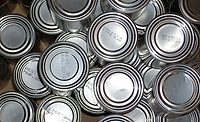Another Food Safety Story: The Destruction of Contaminated Product

The company I worked for produced ice cream under the brand name of a major retailer. Part of the contractual obligations was that batches be delivered accompanied by a certificate of analysis, which, among others included a total viable count (TVC) number. The specification included an upper limit for TVC.
One day, the lab reported that they found the TVC number to be over the limit. There was only one conclusion for this batch: It had to be destroyed. In this case, the product was considered to be still good enough as pig feed and a large pig farmer was contracted for this job. As per company procedure, one of the quality assurance (QA) people went with the frozen truck to the pig farm in order to witness the destruction—on a Friday.
At the farm, workers had to unpack the product and remove all primary packaging material, which then had to be collected and destroyed separately. Everything seemed to be going well, but this batch was rather large, and by Friday at 6 pm, the job was not finished yet. It was agreed that work would continue during the evening hours because there was no refrigeration capacity at the farm and leaving the product overnight—or even over the weekend—at ambient temperatures would create a mess. The company QA man felt that everything was clearly agreed and understood and that it was time for him to go home.
As soon as he left, the workers decided that the destruction of what appeared to be perfectly good looking and smelling ice cream—and a premium brand too—was an incomprehensible and unnecessary waste. They started calling friends and relatives at the village nearly and people came to the farm, loaded their trunks full of this delicious product, and shared the product among neighbors and everybody who wanted a pack or two.
Then, on Saturday morning, a lady who felt this was too good to be true called the service line of the retailer, informing them that free packs of their ice cream were being handed out all over the village. Could the retailer tell her what this was all about? The retailer could not. They had not been informed but proceeded to call the producing company. An immediate public recall was the only possible outcome, but this was a special case. Distribution was—we could safely assume—restricted to one village only, and we could not afford to wait until the normal channels (newspapers mainly) would reach the villagers. Furthermore, we could also assume that a very large percentage of the households actually had a pack in their possession.
We called the mayor, explained the situation, got his support, and on Sunday morning, representatives of the company went door to door to explain and retrieve product. In the meantime, word got out and a photographer from the largest national newspaper followed the recall.
People in the whole country saw the pictures on Monday.
Nobody got sick, as far as we know.
Discussion and Lessons Learned
Three major mistakes had been made here: i) The destruction was supposed to be witnessed, but in the end, it was not and control was lost; ii) it was not sufficiently explained to the workers at the pig farm that this product was no longer fit for human consumption, never mind how good it looked and smelled; and iii) the customer—the retailer—was not informed. They were extremely annoyed about this episode and insisted on tightened procedures—on top of an investigation into the cause of the out-of-spec TVC.
Resource
“Food Safety Assurance Systems: Recall Systems and Disposal of Food,” in Encyclopedia of Food Safety, Volume 4, eds. P. Overbosch and J. C. Carter (Amsterdam: Elsevier, 2014), 309–314.
Stories like these are designed to convey lessons learned in a scientific, technical, operational, ethical, or management setting. As such, the preparation of a book with the working title Food Safety Stories is underway. Its objective is to capture and share the field experience of practitioners in their respective fields with the aim of making the training of professionals more effective.
We thus are soliciting contributions from you, food safety professionals, about unusual or real-life situations experienced or witnessed by you, with a focus on food safety. If you have an experience worth sharing with colleagues or future generations of food professionals that fits this description, we would be happy to receive and review it for possible inclusion in the book. The story can relate to any step of the food chain or any sector from public health, industry, academia, NGOs, or consumers.
Each contribution will be anonymized to the extent possible and needed. The names of the authors and the number of their contributions will only appear in a list at the beginning of the book. The names of the authors will not be linked to individual stories and there will be no mention of brand or company names. Information regarding dates and geography will be broad to avoid recognizable links with companies, brands, or individuals.
For further information about this project and criteria for content, please contact Peter Overbosch, Yasmine Motarjemi, or Huub Lelieveld, editors of Food Safety Stories.
Looking for a reprint of this article?
From high-res PDFs to custom plaques, order your copy today!








